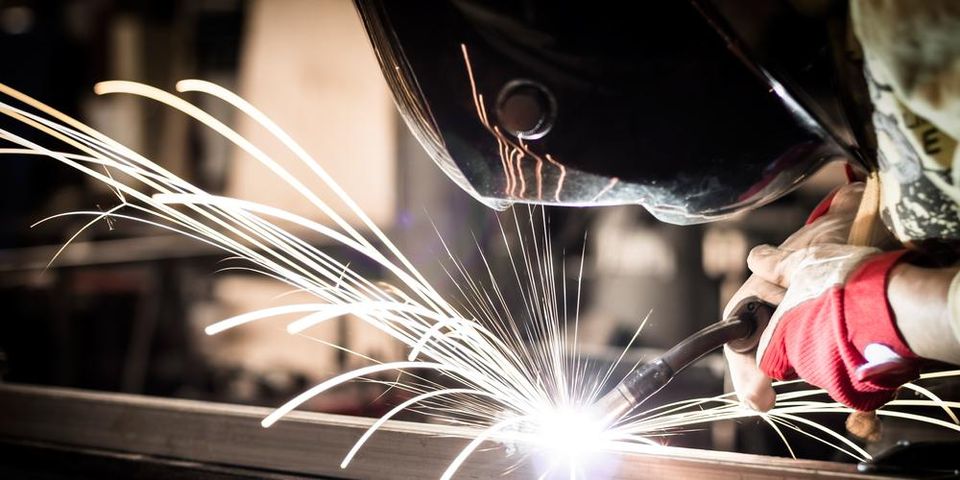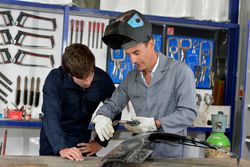
To weld aluminum, a technician uses a process known as Tungsten Inert Gas (TIG) welding. The name comes from the fact that the process utilizes a tungsten electrode and an inert "shielding gas” that protects the material against unwanted chemical reactions. For those unfamiliar with aluminum welding, the process is described in some detail below.
What Is the Aluminum Welding Process?
The Arc
TIG welding starts with a high-frequency spark that ignites the torch and creates a high-temperature electrical current that arcs between the tungsten electrode of the torch and the aluminum base material. This arc melts the metals at the join point. In some cases, the bond formed when the molten metal hardens is enough to complete the process. In other cases, additional material is required.
The Shielding Gas
Oxygen and moisture in the ambient atmosphere can lead to oxidation (rust) in the joint. To prevent this, technicians bathe the weld joint in an inert gas like helium or argon, which do not permit that type of chemical reaction or corrosion. Used in small, controlled quantities, the shielding gas also improves the weld quality, speed, and penetration.
The Filler Rod
As mentioned above, additional material is sometimes required to provide a sturdy, reliable weld. Technicians insert the tip of a slim, filler rod of the base material—in this case, aluminum into the arc at the join point. The material melts, bonds with the base material, and, once hardened, it lends its strength to the bond.
The identical process used for aluminum welding is also used for steel. Other materials require a different methodology. To discuss your needs, contact Brady's Welding Specialties in Tacoma, WA. They've been serving Pierce County and beyond for more than 40 years and will transport their equipment to your location to handle materials or equipment that are too bulky to transport. Call (253) 475-4608 to schedule a consultation or visit their website to view their mobile welding service area.
About the Business
Have a question? Ask the experts!
Send your question

